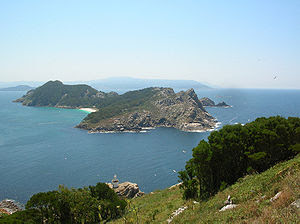- An island is any piece of sub-continental land.
- That is surrounded by water.
- Very small islands emergent land features on atolls can be called;
islets
skerries
cays
keys
- An island in a river or an island in a lake may be called an eyot/ holm.
- A grouping of geographically or geologically related islands is called an archipelago.
- An island may still be described artificial land bridge.
example ;Singapore, causeway
Dutchdelta islands
IJsselmonde
- Historical reasons being connected to a larger landmass by a wide land bridge, such as Coney Island.
- Piece of land is separated from the mainland by a man-made canal;
example-: Peloponnese by the Corinth Canal, it is not considered an island.
- Greenland is the world's largest island.
- Australia the world's smallest continent.
Difference between islands and continents
- Continental lithosphere is part of tectonic plates floating high on Earth's molten mantle.
- Oceanic crust is also part of tectonic plates.
- It is denser than continental lithosphere.
- It floats low on the mantle.
- Islands extensions of the oceanic crust.
- They are part of some continental lithosphere.
Continental islands
- Bodies of land.
- That lie on the continental shelf of a continent.
- A microcontinental island is special continental island.
Long Island
Sable Island
Barbados
Trinidad off South America
Great Britain
Ireland
Sicily off Europe
Sumatra
Borneo
Java off Asia
New Guinea
Tasmania
Kangaroo Island off Australia
Oceanic islands
Macquarie Island in the Pacific
1.volcanic island arc-
- Do not sit on continental shelves.
- The vast majority are volcanic in origin.
Macquarie Island in the Pacific
1.volcanic island arc-
 |
| Hawain island |
- Subduction of one plate under another is occurring.
Aleutian Islands
Tonga in the Pacific Ocean
South Sandwich Islands
2.Oceanic rift -
Jan Mayen
- Reaches the surface.
Jan Mayen
3.Volcanic hotspots-
Tuamotu Archipelago
- A hotspot is more or less stationary relative to the moving tectonic plate above it.
- A chain of islands results as the plate drifts.
- Over long periods of time, this type of island is eventually "drowned" by isostatic adjustment and eroded, becoming a seamount.
- Plate movement across a hot-spot produces a line of islands oriented in the direction of the plate movement.
Tuamotu Archipelago
An atoll
Line Islands
- Formed from a coral reef.
- Grown on an eroded & submerged volcanic island.
- The reef rises to the surface of the water and forms a new island.
- Atolls are typically ring-shaped with a central lagoon.
Line Islands
Tropical islands
- There are approximately 45,000 on Earth.
- Coral tropic islands are;
Tonga
Nauru
Polynesia
Granite islands
- Include Seychelles and Tioman.
- The socio-economic ranges from the Stone Age societies ,in the interior of ;
Borneo or Papua New Guinea
- The high-tech lifestyles of the city-islands of ;
Hong Kong
- International tourism is a significant factor in the local economy ;
 |
| Galicia Island |
Desert island
- Island with no people.
- Exists in a state of being deserted, or abandoned.
- An ariddesert climate is not typically implied.
Natural and artificial island
- Earth's islands are natural.
- Formed by tectonic forces or volcanic eruptions.
- Artificial or man-made islands also have our earth.
- Artificial islands can be built using natural & artificial materials.
sand
rock
recycled waste
concrete slabs)
- Sometimes natural islands are enlarged.









No comments:
Post a Comment